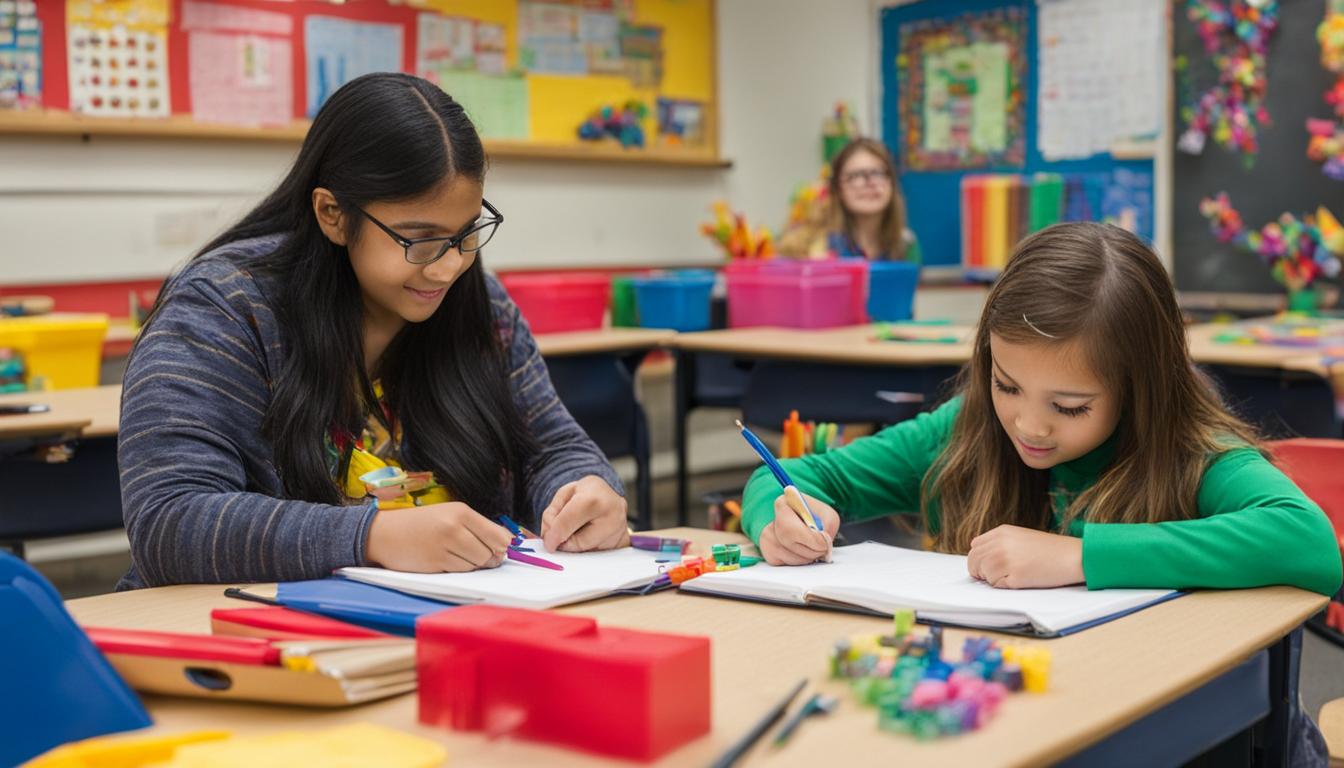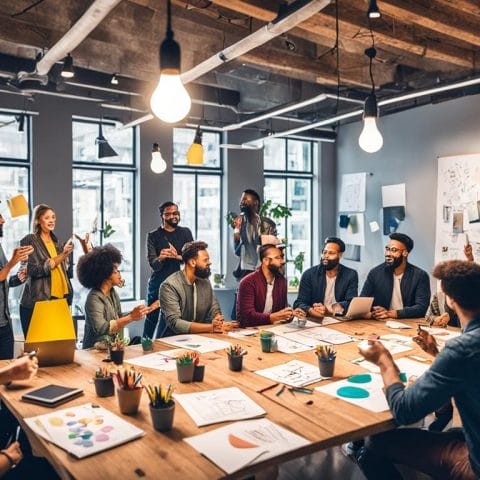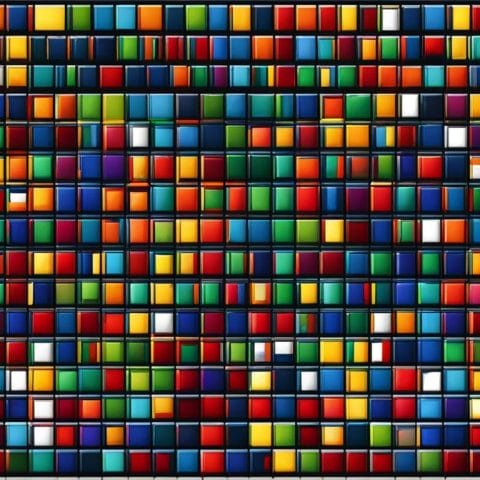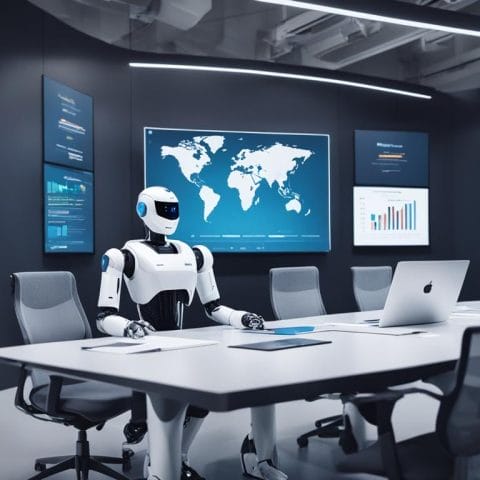When it comes to education, one size does not fit all. Each student has unique needs, abilities, and learning styles that should be recognized and addressed. This is especially true for students with special needs, who often require additional support and accommodations to thrive academically.
So, how can we ensure that students with special needs receive the personalized attention and resources they deserve? How can we create an inclusive educational environment that empowers every student to reach their full potential?
In this article, we will explore the power of personalized learning in special education. We will delve into individualized education programs, special education strategies, and the use of assistive technology to enhance the learning experience for students with special needs. Join us as we discover the potential of personalized learning to transform education for students of all abilities.
Key Takeaways:
- Personalized learning tailors education to the specific needs of each student, including those with special needs.
- Individualized education programs (IEPs) are essential for providing targeted support and accommodations for students with disabilities.
- Assistive technology plays a crucial role in enhancing the learning experience for students with special needs.
- Personalized learning promotes inclusion and accessibility in education, empowering every student on their educational journey.
- Through personalized learning, students with disabilities can receive the support they need to thrive academically and reach their full potential.
The Importance of Individualized Education Plans
Individualized education plans (IEPs) play a crucial role in the education of special education students. These plans outline specific goals, accommodations, and support services necessary to help students with special needs reach their full potential. By tailoring education to the unique learning needs of each student, IEPs ensure that individualized support and services are provided.
“IEPs are designed to create a roadmap for success, providing students with the necessary tools and accommodations to thrive in the classroom.”
The concept of personalized learning draws inspiration from IEPs, aiming to provide every student with a customized education plan that meets their specific needs. By incorporating the principles and strategies of IEPs into personalized learning approaches, schools can better serve students with special needs.
Individualized education plans take into account the strengths, weaknesses, and learning styles of students. They guide educators in making informed decisions about instructional methods, individual accommodations, and specialized services. By focusing on individualized support, IEPs empower special education students to overcome challenges and achieve academic success.
IEPs also facilitate collaboration among teachers, parents, and other professionals involved in the education and development of students with special needs. By establishing shared goals and objectives, IEPs foster a team approach to education, ensuring that all stakeholders work together to provide the necessary support and accommodations.
Benefits of Individualized Education Plans:
- Address the unique needs of special education students
- Provide tailored accommodations and support services
- Empower students to reach their full potential
- Foster collaboration among educators and families
- Promote inclusive and accessible education
Individualized education plans are essential in ensuring that special education students receive the support they need to thrive academically, socially, and emotionally. By incorporating the principles of IEPs into personalized learning approaches, schools can create an inclusive educational environment that celebrates the diverse abilities and strengths of every student.
Role of Individualized Education Plans in Personalized Learning
Personalized learning builds upon the foundation of individualized education plans. It takes the principles of IEPs and extends them to all students, recognizing that every learner has unique needs and interests. By providing customized instruction, resources, and assessments, personalized learning promotes student engagement and motivation.
Through the integration of technology, adaptive resources, and differentiated instruction, personalized learning creates an inclusive educational experience that benefits all students. By leveraging the strategies and accommodations outlined in IEPs, personalized learning ensures that special education students have access to the specialized services and accommodations necessary for their success.
The Rise of Personalized Learning in Education
Personalized learning has become a prominent trend in the field of education, revolutionizing the traditional one-size-fits-all approach. This innovative instructional method has garnered significant attention, particularly due to the support of Silicon Valley philanthropists. The contributions from these tech-savvy individuals have propelled personalized learning into classrooms across the country, making it an integral part of education trends.
With more than 40 states currently exploring personalized learning in various forms, it’s clear that this approach is here to stay. The COVID-19 pandemic has further amplified the need for personalized learning as educators navigate the challenges of remote and hybrid learning environments. As a result, education leaders are actively seeking solutions to address the learning gaps students face, and personalized learning has emerged as a potential method to better serve students with diverse educational experiences.
One of the driving forces behind personalized learning is its alignment with the principles of special education, which has long emphasized the importance of individualized support. By drawing inspiration from special education strategies, personalized learning initiatives aim to provide tailored instruction that meets the unique needs of each student. This inclusive approach fosters an educational environment where students can thrive and reach their full potential.
Embedding the concept of personalized learning into the education system has been a collective effort, with Silicon Valley philanthropists playing a crucial role. Their support has not only fueled the adoption of personalized learning but has also provided the necessary resources and funding to make it accessible to a wider range of students.
Education Trends
The rise of personalized learning as an education trend is evident in the increasing number of schools and districts embracing this innovative approach. Educators recognize the importance of catering to the individual needs of students and the benefits it brings to their overall educational experience. By providing tailored instruction, personalized learning aims to create a more engaging and effective learning environment that focuses on the unique strengths and areas of improvement for each student.
Silicon Valley Philanthropists
Silicon Valley philanthropists have played a pivotal role in driving the growth and expansion of personalized learning. Their contributions and support have paved the way for the adoption of this instructional approach in classrooms nationwide. By leveraging their expertise and resources, Silicon Valley philanthropists have helped bridge the gap between technology and education, transforming the way students learn and educators teach.
Challenges and Considerations for Personalized Learning
While personalized learning holds promise, it comes with various challenges and considerations that need to be addressed for successful implementation. Allocating adequate resources is one of the primary challenges in personalized learning, including funding, teacher training, and access to technology.
Funding: Implementing personalized learning requires financial resources to support the necessary infrastructure, technology tools, and ongoing professional development for educators. Without sufficient funding, schools may struggle to provide the necessary resources to implement personalized learning effectively.
Teacher Training: To successfully implement personalized learning, teachers need proper training and support. It is crucial to provide educators with professional development opportunities that focus on personalized instructional strategies, data analysis, and technology integration. By equipping teachers with the necessary skills, they can effectively meet the diverse learning needs of their students.
Collaboration: Collaboration between teachers, students, parents, and other stakeholders is vital for the success of personalized learning. This collaboration fosters a supportive learning environment where everyone is involved in the educational journey. Regular communication and close collaboration ensure that students’ individual needs are met, and interventions can be implemented as needed.
Technology Integration: Technology plays a significant role in personalized learning. However, it should not be viewed as a standalone solution. The successful implementation of personalized learning requires the proper integration of technology tools and platforms that support individualized instruction. Additionally, schools must ensure equitable access to technology for all students, regardless of their socio-economic background.
“Collaboration between teachers, students, parents, and other stakeholders is vital for the success of personalized learning.”
To fully understand the importance of these challenges and considerations, let’s take a look at the following table that highlights the key resources, trainings, and collaborative efforts needed for successful implementation:
| Challenges and Considerations for Personalized Learning | Resources Needed | Actions/Trainings | Collaborative Efforts |
|---|---|---|---|
| Funding | Financial resources to support infrastructure, technology tools, and professional development | Secure funding through grants, partnerships, or district budget allocations | Engage with district administrators, community organizations, and potential funders |
| Teacher Training | Professional development programs focused on personalized instructional strategies, data analysis, and technology integration | Offer ongoing professional development opportunities | Establish professional learning communities, share best practices, and provide mentorship |
| Collaboration | Open lines of communication and platforms for collaboration | Implement communication channels and collaboration tools | Hold regular meetings and involve parents and community members in the decision-making process |
| Technology Integration | Equitable access to technology tools and platforms | Provide necessary devices, internet connectivity, and software | Ensure technology infrastructure is in place and accessible to all |
Addressing these challenges and considerations can lead to a more successful implementation of personalized learning, leading to improved student outcomes and a more inclusive and engaging educational experience.
Benefits of Personalized Learning for Students with Disabilities
Personalized learning is a transformative approach that can have a profound impact on students with disabilities. By incorporating differentiated instruction and tailored learning accommodations, personalized learning ensures that every student can access education in a way that suits their individual needs and abilities. This section explores the benefits of personalized learning for students with disabilities and the role of adaptive technologies in enhancing their learning experience.
1. Differentiated Instruction
In personalized learning, differentiated instruction is at the core of creating an inclusive learning environment. Teachers tailor their approach to meet the unique learning styles, strengths, and challenges of students with disabilities. This personalized approach allows students to learn at their own pace, reinforces their strengths, and provides targeted support where needed. Whether it’s through small group activities, individualized projects, or adaptive learning materials, differentiated instruction ensures that students with disabilities receive the individualized attention they deserve.
2. Tailored Learning Accommodations
Personalized learning recognizes that students with disabilities may require specific accommodations to access education effectively. These accommodations can include modified assignments, extended time for assessments, preferential seating, or the use of assistive devices. By incorporating these accommodations into the learning experience, personalized learning ensures that students with disabilities have an equal opportunity to succeed academically.
3. Integration of Adaptive Technologies
Adaptive technologies play a crucial role in personalized learning for students with disabilities. These technologies, such as assistive devices, specialized software, and communication tools, empower students to overcome barriers and maximize their learning potential. For example, text-to-speech software can assist students with reading difficulties, while alternative input devices enable students with physical disabilities to interact with technology. The integration of adaptive technologies in personalized learning creates a more inclusive and accessible educational experience for students with disabilities.
“Personalized learning has been instrumental in empowering my son, who has a learning disability. By tailoring his education to his unique needs and providing the necessary accommodations, he has gained confidence and achieved academic success.” – Parent of a student with a disability
Through the implementation of differentiated instruction, tailored accommodations, and the integration of adaptive technologies, personalized learning offers students with disabilities a supportive and inclusive educational experience. By meeting their individual needs and providing the necessary tools and resources, personalized learning empowers students with disabilities to thrive academically and reach their full potential.
Table: Examples of Adaptive Technologies for Students with Disabilities
| Disability | Adaptive Technology |
|---|---|
| Visual Impairment | Screen readers, braille displays, magnification software |
| Hearing Impairment | Captioning tools, visual alerts, assistive listening devices |
| Physical Disabilities | Alternative input devices, switch controls, speech recognition software |
| Learning Disabilities | Text-to-speech software, speech-to-text software, graphic organizers |
Implementation of Personalized Learning in Chicago Public Schools
Chicago Public Schools has fully embraced personalized learning, thanks to the support received from the Chan Zuckerberg Initiative. This initiative has paved the way for teachers and principals in Chicago to undergo extensive training in personalized learning techniques. As a result, a significant shift in mindset from traditional teaching methods has occurred, making room for individual learner profiles for every student, similar to IEPs.
The implementation of personalized learning within Chicago Public Schools has been a remarkable success, largely due to the emphasis placed on teacher training and ongoing professional development. Educators have collaborated closely to ensure the effective integration of personalized learning strategies into their classrooms.
“The personalized learning initiative in Chicago has revolutionized how we approach education. Through comprehensive teacher training and the creation of individual learner profiles, we have been able to meet the unique needs of our students and provide them with the support they require to succeed.” – Principal Smith, Chicago Public School
Teacher Training and Mindset Shift
A crucial aspect of implementing personalized learning in Chicago Public Schools has been the extensive teacher training offered. Teachers have been equipped with the tools and knowledge needed to create personalized learning environments where students’ individual needs are met.
This training has involved workshops, seminars, and online courses designed to help teachers incorporate personalized learning techniques into their instructional practices. By focusing on student-centered approaches and providing differentiated instruction, teachers can better cater to the diverse learning needs of their students.
Individual Learner Profiles
Similar to Individualized Education Programs (IEPs) used in special education, individual learner profiles have been created for each student in Chicago Public Schools. These profiles capture essential information about students’ strengths, areas for improvement, and learning preferences.
These profiles serve as a valuable resource for teachers, enabling them to gain a deeper understanding of their students’ unique characteristics and tailor instruction accordingly. By leveraging the insights provided by individual learner profiles, teachers can create targeted learning experiences that foster student engagement and academic success.
Collaboration and Professional Development
The successful implementation of personalized learning in Chicago Public Schools has been driven by strong collaboration among educators. Teachers have engaged in collaborative planning sessions, sharing ideas, and best practices to refine their personalized learning strategies.
Furthermore, ongoing professional development opportunities have been provided to ensure that teachers stay up-to-date with the latest research and techniques in personalized learning. These development programs have reinforced the importance of individual learner profiles, effective data analysis, and instructional adaptations to meet students’ evolving needs.
| Benefits of Implementation in Chicago Public Schools |
|---|
| Enhanced student engagement through personalized learning experiences |
| Increased academic success and attainment |
| Greater alignment between student needs and instructional strategies |
| Promotion of student agency and ownership of learning |
| Improved collaboration and communication among educators, students, and families |
Strategies for Personalized Learning in Special Education
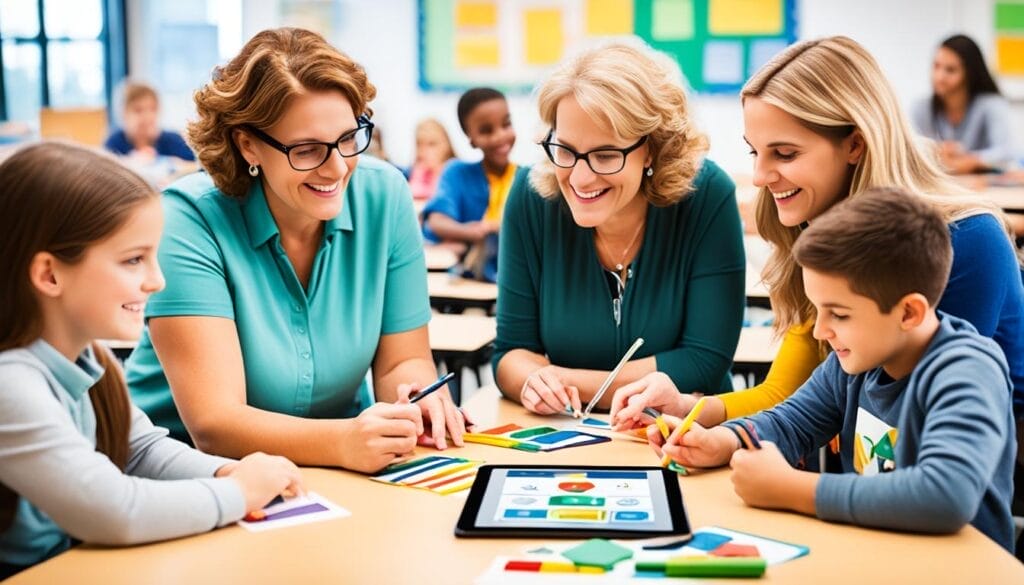
Incorporating personalized learning strategies in special education classrooms can greatly enhance the educational experience for students with disabilities. By leveraging effective practices from both personalized learning and special education, educators can create customized learning environments that promote student engagement and success.
Competency-Based Learning
Competency-based learning is a widely recognized approach in special education classrooms. This strategy requires students to demonstrate mastery of a specific skill or concept before moving on to the next one. By focusing on individual progress and understanding, competency-based learning ensures that students with disabilities receive the support they need to succeed in their own time.
Co-Teaching
Co-teaching, the practice of two or more teachers sharing the responsibility for a classroom, is another effective strategy in special education and personalized learning. By working collaboratively, general education and special education teachers can provide differentiated instruction, individualized support, and accommodations to meet the diverse needs of students. Co-teaching fosters a supportive and inclusive classroom environment while promoting student growth and learning.
Hands-On Learning
Hands-on learning is a valuable strategy for engaging students with disabilities in personalized learning. By incorporating experiential activities, projects, and real-world applications, educators can create meaningful learning experiences that cater to individual strengths and interests. Hands-on learning not only enhances student engagement but also promotes critical thinking, problem-solving, and skill development.
By combining competency-based learning, co-teaching, and hands-on learning strategies, educators can unlock the full potential of personalized learning in special education. These approaches empower students with disabilities to take an active role in their education, promote academic growth, and foster a positive learning environment.
| Strategy | Description |
|---|---|
| Competency-Based Learning | Students must demonstrate mastery before progressing to the next level. |
| Co-Teaching | Collaborative approach where general education and special education teachers work together to support students. |
| Hands-On Learning | Engaging students through experiential activities, projects, and real-world applications. |
Personalized Learning and the Every Student Succeeds Act
The passage of the Every Student Succeeds Act (ESSA) presents an opportunity for states to incorporate personalized learning into their education systems. ESSA encourages the use of competency-based education and flexible pathways, which align with the principles of personalized learning. This legislation promotes the inclusion of blended and online learning tools to support personalized pathways for students. By embracing personalized learning as part of ESSA implementation, states can create educational systems that better serve students with disabilities and prepare them for success in college and beyond.
ESSA provides a framework for states to advance personalized learning initiatives and tailor education to individual student needs. The act emphasizes competency-based education, where students progress based on their mastery of specific skills and knowledge rather than traditional grade levels. This approach allows students to learn at their own pace and provides a more accurate measure of their academic growth.
Flexible pathways are another key component of ESSA, enabling students to choose from a variety of educational options that align with their interests and aspirations. This flexibility allows students to explore different learning environments, such as virtual schools or career and technical education programs, to find the pathway that best suits their individual needs and goals.
“ESSA encourages states to create innovative learning environments that address the unique needs of students, especially those with disabilities. By embracing personalized learning, states can foster individualized support and empower students to excel academically.”
The integration of blended and online learning tools, as recommended by ESSA, further enhances personalized learning opportunities. Blended learning combines face-to-face instruction with technology-enabled resources, allowing students to engage with content in multiple modalities. This approach provides flexibility and customization, as students can access materials online, collaborate with peers, and receive virtual instruction tailored to their specific needs.
To showcase the impact of ESSA’s personalized learning focus, here is a comparison table highlighting its key features:
| Traditional Education | Personalized Learning under ESSA |
|---|---|
| One-size-fits-all approach | Customized learning plans based on student needs and interests |
| Grade-based progression | Competency-based progression |
| Conventional classroom instruction | Blended learning, incorporating technology and individualized support |
| Limited pathways and course offerings | Flexible pathways, diverse educational options based on student preferences |
By embracing personalized learning within the framework of ESSA, states can create educational systems that prioritize student-centered approaches and empower students with disabilities to thrive. This integration promotes inclusivity, fosters academic growth, and prepares students for future success in higher education and the workforce.
Incorporating Student Choice and Voice in Personalized Learning

A key aspect of personalized learning is giving students the freedom to make choices in their learning journey. This includes choosing how they learn, pursuing projects aligned with their interests, and having a say in how their learning is assessed. Students with disabilities can greatly benefit from this aspect of personalized learning, as it empowers them to take ownership of their education.
Project-based learning, where students engage in hands-on, real-world projects, is a common approach to incorporate student choice and voice in personalized learning. By allowing students to collaborate and explore topics that resonate with their interests and strengths, project-based learning fosters a sense of autonomy and engagement. Students with disabilities are no exception, as they can actively participate in designing projects that cater to their unique abilities and learning styles.
Project-based learning encourages students to become active participants in their own education. By allowing them to choose projects and topics that align with their interests, it empowers them to take charge of their learning journey and develop important skills such as research, problem-solving, and critical thinking.
Additionally, incorporating student voice in personalized learning can have a transformative impact on students with disabilities. By actively involving them in decision-making processes, such as setting learning goals or determining assessment methods, educators can ensure that their individual needs and preferences are taken into account. This not only enhances their sense of agency but also promotes self-advocacy skills that are crucial for lifelong learning and success.
The Benefits of Student Choice and Voice in Personalized Learning
The benefits of incorporating student choice and voice in personalized learning are vast:
- Enhanced motivation and engagement
- Increased ownership of learning
- Development of critical thinking and problem-solving skills
- Greater self-awareness and understanding of individual learning preferences
- Improved collaboration and communication skills
- Enhanced self-advocacy and decision-making skills
By actively involving students with disabilities in shaping their educational experience, personalized learning can create a more inclusive and empowering environment that meets their unique needs. It enables them to thrive academically, build confidence, and prepare for future success.
Unlocking Student Potential Through Personalized Learning
When students have the freedom to make choices and have their voices heard, it unleashes their full potential. Personalized learning, with its focus on student choice and voice, can be a powerful tool in transforming education for students with disabilities. By embracing this approach and creating a supportive and inclusive learning environment, educators can empower every student to excel and thrive.
The Power of Data in Personalized Learning
Data plays a crucial role in personalized learning. By leveraging the insights gained from formative assessments and real-time data collection, educators can tailor instruction to meet the unique needs of each student. This data-driven approach is especially beneficial for students with disabilities, as it allows for targeted instruction and intervention strategies that address their specific challenges and promote academic growth.
Formative assessment is an integral part of personalized learning. These ongoing assessments provide valuable feedback on student progress and learning gaps. With the aid of technology, teachers can collect and analyze data in real-time, enabling them to identify areas where students may need additional support or enrichment. This targeted instruction ensures that students receive the personalized attention necessary to succeed.
“Data-driven personalized learning helps teachers make informed decisions about intervention strategies and adjust instruction to meet the specific needs of students.”
Real-time data analysis allows educators to monitor student performance and make informed instructional decisions. Whether it’s adjusting the pace of instruction, modifying learning materials, or providing additional one-on-one support, data empowers teachers to tailor their approach to maximize student engagement and learning outcomes.
Moreover, the power of data extends beyond individual student progress. When aggregated and analyzed, data provides valuable insights into the effectiveness of instructional strategies, curriculum materials, and overall program implementation. This data-driven feedback loop enables educators to continuously refine and improve personalized learning initiatives, ensuring that they are truly responsive to the needs of students with disabilities.
The Benefits of Data-Driven Personalized Learning
Data-driven personalized learning offers several key advantages in supporting the educational journey of students with disabilities:
- Targeted Instruction: By utilizing real-time data, teachers can provide targeted instruction that addresses students’ specific learning needs, promoting deeper understanding and mastery of concepts.
- Individualized Support: With access to data on each student’s progress and performance, educators can provide personalized support and interventions that address areas of weakness and foster growth.
- Monitoring Progress: Data collection and analysis allow educators to monitor progress and track growth over time, ensuring that students are on the path to achieving their academic goals.
- Evidence-Based Decision Making: By using data to inform instructional decisions, teachers can rely on evidence-based practices that have proven effective in supporting student learning.
Through the power of data, personalized learning becomes an even more effective and impactful approach for students with disabilities. When educators have real-time insights into student progress and ongoing access to relevant data, they can make informed decisions that lead to improved learning outcomes and increased educational opportunities.
Conclusion
Personalized learning has the potential to revolutionize special needs education by creating a learning environment that caters to the unique needs and strengths of each student. By tailoring instruction and support, personalized learning promotes inclusivity and empowers students with disabilities to thrive academically.
By implementing proven strategies such as individualized education plans, competency-based learning, and collaboration among educators, personalized learning can effectively bridge the achievement gap and provide students with disabilities the tools they need to achieve their educational goals.
As education continues to evolve, the integration of personalized learning in special needs education will play a critical role in ensuring that every student receives the education they deserve. By embracing personalized learning, schools can create an inclusive and empowering environment where all students, regardless of their abilities, have the opportunity to succeed.
FAQ
What is personalized learning?
Personalized learning is an educational approach that tailors learning experiences to the specific needs and abilities of each student. It involves creating individualized education plans and utilizing assistive technology to enhance the learning experience.
What are individualized education plans (IEPs)?
Individualized education plans (IEPs) are plans that outline specific goals, accommodations, and support services for students with disabilities, enabling them to learn at their full potential.
Why is personalized learning gaining attention?
Personalized learning has gained attention due to its potential to address learning gaps exacerbated by the COVID-19 pandemic. It allows for individualized support and draws inspiration from special education strategies.
What are the challenges of personalized learning?
Challenges of personalized learning include resource allocation, funding, teacher training, and access to technology. Collaboration with families and effective communication are key for successful implementation.
How does personalized learning benefit students with disabilities?
Personalized learning provides differentiated instruction and tailored accommodations, allowing students with disabilities to learn at their own pace and in a way that suits their needs. Adaptive technologies enhance their learning experience.
How has personalized learning been implemented in Chicago Public Schools?
Chicago Public Schools implemented personalized learning with support from the Chan Zuckerberg Initiative. Teachers received extensive training, and individual learner profiles, similar to IEPs, were created for each student.
How does personalized learning align with strategies used in special education?
Personalized learning aligns with effective practices in special education, including competency-based learning, co-teaching, and hands-on learning, promoting student engagement and success.
How does the Every Student Succeeds Act (ESSA) relate to personalized learning?
The Every Student Succeeds Act (ESSA) encourages personalized learning by promoting competency-based education, flexible pathways, and the use of blended and online learning tools to support students’ personalized pathways.
How does personalized learning incorporate student choice and voice?
Personalized learning empowers students to make choices in their learning journey, including selecting how they learn and pursuing projects aligned with their interests. Project-based learning is a common approach to incorporate student choice and voice.
How does data play a role in personalized learning?
Data-driven personalized learning involves formative assessments and ongoing data collection to track student progress, identify learning gaps, and provide targeted instruction, benefiting students with disabilities who may require additional support.
What are the overall benefits of personalized learning in special needs education?
Personalized learning in special needs education creates an inclusive environment where every student can thrive. It bridges the achievement gap and empowers students with disabilities to achieve their educational goals.

